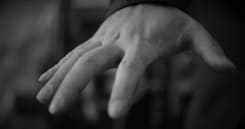Heroin: A Definition
Heroin is notorious for being one of, if not the most dangerous drug available. It is an incredibly powerful opiate drug made from morphine, extracted from the seed pods of specific types of poppy plants.

It is an illegal narcotic drug classified as a Schedule I drug with the Drug Enforcement Administration. There are no medical uses for heroin and it’s recognized as having an incredibly high potential for abuse.
While only an estimated half a million people actively use heroin it is by far the most deadly drug available. In 2017, heroin use claimed the lives of more than 40 people each day. Heroin-related incidents lead to to 81,326 emergency room visits in 2015. And between 2010 and 2017, overdoses caused by heroin increased more than five times over.
What is heroin, why do people use it, and why does it claim an increasing number of lives each year?
What is Heroin?
Heroin is a “downer,” an opiate drug that causes users to feel an extreme sense of calmness and relaxation. It usually comes in one of two forms: a crushed brown or white powder, or a sticky black substance.
The sticky black type of heroin is more common and more affordable than the more “pure” white powdered form. People use the former either by smoking it off of foil or cooking it down and injecting it into a vein, also called “shooting up.” They can ingest the powdered form in the same ways, but also have the option to snort the powder.
Smoking heroin is the most common way to use it since it’s easier to purchase foil than it is to purchase syringes. Injecting the drug results in the strongest high, though, but it is also a riskier way to use it.
Effects of Heroin
The effects of the drug come on quickly regardless of the way a user ingests it. Heroin binds to and activates the opioid receptors in the brain. These receptors are responsible for the perception of pain and pleasure, as well as sleeping, heart rate, and breathing.
Heroin causes extreme and overwhelming feelings of euphoria, calmness, drowsiness, and relaxation. It causes heaviness in the user’s arms and legs and flushing of their skin. Itchiness, dry mouth, nausea, and vomiting are some of the less pleasant side effects of heroin use. It also causes constipation and other stomach issues.
“Nodding out” is one of the biggest effects of heroin. It is a slang term that refers to the way users slip between states of wakefulness and sleep. Nodding out is characterized by the way a user’s head and chin droops or “nods” down to their chest when
they are high.
Street Names and Nicknames for Heroin
While users often refer to heroin simply by its name, there are a few other slang terms that they also use to talk about the drug. For example, the two different forms of heroin each have their own nickname. The white powder form of heroin is usually “China White” or “White China”. The sticky black form of the drug is mostly called black tar heroin.
Regardless of the type of heroin it is, though, many users call it “dope.” They also call the onset of heroin withdrawal symptoms while coming down “dope sickness.” Some people call it “H” or “Big H.” Less common street names for heroin include:
- Horse
- Hell Dust
- Chiva
- Smack
- Thunder

Methamphetamine is a strong illegal drug that causes a number of stimulating effects. It’s highly addictive with nearly a million active users each month. Plenty of misunderstanding surrounds the drug and its users, though. Learn more about methamphetamine and the impact it has on those who use it.
More info
Cocaine is a drug notorious for its place in the clubbing and nightlife scenes of major cities throughout the world. What exactly is cocaine, how is it made, where does it come from, and what does it do? Learn more about the impact of cocaine on the body, on society, and more.
More infoChemistry of Heroin
Heroin is made from morphine, which is taken from the pods of poppy plants. These plants tend to grow mainly in Mexico, Colombia, and both Southeast and Southwest Asia. Bayer pharmaceuticals first synthesized it in 1874 as a safer alternative to morphine for treating pain.
Clinicians quickly realized that their supposed “safer” alternative to morphine was just as harmful. The United States outlawed heroin in 1924 but that didn’t keep people from illegally manufacturing the drug.
The heroin found on the streets today now comes in two main forms: white or brown powder and sticky, black tar. These two versions come from the different manufacturing methods used to create them.
Black tar heroin gets its dark, tar-like appearance from the impurities that the manufacturing process leaves behind. Powdered heroin is considered a more “pure” form of the drug since there are fewer impurities in this form of substance.
This doesn’t mean that China White is any safer than black tar, though. There may be fewer impurities from the manufacturing process itself but it’s not free of foreign contents. Heroin manufacturers cut the powdered form of the drug with fillers like starch, sugars, or powdered milk to increase profits.
Heroin Myths
The notorious nature of heroin caused a few different myths about the drug. Although it’s never safe to use heroin it’s also dangerous to spread misinformation about it. The following are a few examples of the myths associated with heroin and heroin users.
A legitimate pain medication prescription can lead to heroin use.
Statistics from one study revealed that 75 percent of heroin users first started with using prescription pain medication. While those statistics are accurate, another survey showed that over 75 percent of people using painkillers were using these drugs without a prescription. So opioids may lead to heroin use but only 4 percent of people who use opioids start using heroin.
Heroin causes HIV or hepatitis.
Some users develop HIV or hepatitis as a result of using heroin but the drug itself isn’t what causes these conditions. People contract these conditions when they inject heroin with a “dirty needle,” meaning one already used by someone else who has HIV or hepatitis.
It is impossible to maintain long-term recovery from heroin use.
Studies surrounding the relapse rates of heroin users scare people and trick them into thinking it’s impossible to get clean. This couldn’t be further from the truth, though. It is difficult to quit using heroin but it isn’t impossible. There are many options for people trying to get clean, especially addiction treatment at a certified facility.
Heroin Facts
The fact of the matter is that heroin use is dangerous. It doesn’t matter which form of the drug someone uses or the method in which they ingest it. Heroin is incredibly addictive and it’s difficult to quit using. Additionally, the grim facts and statistics surrounding heroin
use are alarming.
- Heroin use leads to a large number of negative long-term health effects.
- IV drug use caused nearly 20 percent of recorded cases of HIV in men in 2016.
- Some studies show a loss of brain matter associated with long-term heroin use.
- An overdose can occur even after one bad shot due to inconsistencies in batches.
Where Does Heroin Come From?
In order to find out where heroin comes from, you have to trace the production of the drug. Heroin found on the streets is made with morphine as its base. Morphine is a drug extracted from opium, and opium is a substance harvested from the pods of poppy plants.

Opium use dates back to ancient times in Mesopotamia, what is now Southwest Asia. It made its way through various locations, from the Sumerians to the Assyrians and the Egyptians. The drug was also eventually traded along the Silk Road, expanding its reach throughout Asia and the Mediterranean.
People also noted the pleasurable, euphoric, and relaxing effects that came with ingesting opium. These effects encouraged the recreational use of the drug, particularly in China after Britain smuggled in Indian opium supplies.
Then opium dens were created as establishments to purchase and smoke opium, found throughout Southeast Asia and China. When Chinese immigrants came to the United States in the 1800’s during the Gold Rush they brought recreational opium use with them.
When Was Heroin Discovered?
Again, heroin production can be traced back to opium production. Despite the recreational use of opium, there were legitimate medical uses for it as well. It helped treat severe pain and induce sleep in those with sleeping problems.
Drug manufacturers looked to extract the active ingredients in opium to create stronger drugs. Scientists first extracted morphine from opium in 1803, a drug 10 times stronger than its opium base. Physicians saw it as a miracle drug for effective pain relief and still use it to this day.
Morphine didn’t come without its negative effects, though. It is an incredibly addictive drug and after widespread use as a painkiller, many people became addicted. The Bayer Company, a pharmaceutical company in Germany, set out to create a non-addictive form of morphine in response.
Scientists at Bayer first created heroin from morphine in 1874 then brought it to market in 1898. Physicians prescribed it as a cough suppressant and pain reliever to both adults and children. Unfortunately, they didn’t realize this newer form of the miracle drug came with an incredible addiction potential as well.
When Did Heroin Come to the United States?
Medical heroin made its way into physicians’ offices in the United States around the turn of the 20th century. It was still used to treat patients for pain and cough. But the recreational use of heroin soon became popular as well.
Rates of heroin abuse skyrocketed throughout the first decade of the 1900’s. Physicians could no longer deny the addictive nature of heroin in addition to morphine. President Theodore Roosevelt positioned Dr. Hamilton Wright as the country’s Opium Commissioner to address the issue in 1908.
In 1914 the United States passed the Harrison Narcotics Tax Act as a response to the still-growing rates of opiate use. The act was made to regulate the sale and use of opiate drugs, including both heroin and opium.
When Did Heroin Become Illegal?
Despite the moves the United States government made to limit the use of opiates, the narcotic was still popular. Congress then passed the Anti-Heroin Act of 1924 as an additional step to push back against the use of opiates.
The Anti-Heroin Act made the manufacturing, importing, or selling of either heroin or opium illegal. This was the U.S. government’s first move towards outlawing opiate drugs. But this still didn’t stop manufacturers from creating heroin outside of the United States then trafficking it into the country.
Nearly 50 years later, President Nixon created the Drug Enforcement Administration (DEA) to enforce the country’s drug laws. The heroin problem was still in full-force and Nixon hoped that a narcotics-focused administration would help counter the issue.
The DEA also created the drug scheduling chart and placed heroin in its highest classification: Schedule I. Schedule I drugs are known for their incredible potential for abuse and their lack of use in the medical field.
Heroin Uses
Heroin, an addictive and powerful morphine drug, easily hooks people in its grasp. Use isn’t as widespread when it comes to heroin as it is with other drugs like marijuana, cocaine, or prescription painkillers.

Still, there are nearly half a million people throughout the United States who actively use the drug. Understanding how the drug is used will give you a better idea of what to look for if you’re concerned that someone you know is using heroin.
Also, are there any more legitimate medical uses for heroin? Physicians of the 1900s considered it a miracle drug but what about today? For example, some professionals still find a medical use for cocaine Do any doctors still use heroin to treat their patients?
Heroin Medical Uses
When the Bayer company first introduced heroin to the public in 1898, they intended for it to help with the morphine addiction problem. Like heroin, morphine was intended to curb the opium addiction problem.
Unfortunately, neither drug fulfilled its purpose and simply created a new substance for people to misuse. Heroin addiction replaced morphine addiction and became an even more dangerous drug than the one it set out to replace.
Heroin itself sees no more use within the medical community but there still drugs trying to take its place. Doctors went from opium to morphine to heroin but the chain didn’t stop there. Scientists set out to address the addictiveness of these substances but have not yet created an effective solution.
The Rise of Prescription Painkillers
Prescription painkillers are the latest attempt to create an alternative to drugs like morphine and heroin. The nationwide opioid crisis shows that scientists haven’t solved the problem like they hoped to, though. People now abuse prescription medication in the same way they abused morphine and heroin.
If anything, the introduction of prescription painkillers led to an even larger problem. Half a million people ages 12 and older are active heroin users. Meanwhile there are an estimated 3.2 million people who misuse prescription pain relievers.
Scientists are now working to find alternative solutions to relieving pain without an addictive drug. It’s a challenging feat to accomplish since the base opiate substance is so addictive to begin with. Hopefully, the medical community can find a safe alternative and a solution to the
overwhelming opiate crisis spanning the past century.

Learn more about OxyContin, a powerful prescription opioid used to treat severe, long-term pain. It’s also a popular drug for recreational use and abuse. What is OxyContin? Uses, Side Effects, Contraindications, Dangers, and More.
More info
Substance use disorder is a progressive condition that affects millions of people across the United States. Learn more about Substance Use Disorder, Causes, Signs and Symptoms, Treatment, and more.
More infoHeroin Recreational Uses
Heroin still sees recreational use among some of the country’s population despite the work of the Drug Enforcement Administration and other organizations. How do people use heroin today?
How Heroin is Used
Heroin comes in two forms: black tar heroin and white or brown powdered heroin. Black tar is more common in the western U.S. while the majority of powdered heroin makes its way to the eastern states.
Neither form of heroin is safe but powdered heroin is a “cleaner” substance because it has fewer impurities. Since it comes in a powder, users often snort this form of heroin (similar to snorting cocaine). They can also smoke or inject powdered heroin.
Black tar heroin is usually cheaper than its powder counterpart because of the crude methods used to make it. Users cannot snort black tar; they have to smoke it or cook it down and inject it. Injecting the drug comes with an entirely different set of dangerous side effects of heroin.
Some users prefer powdered heroin because they don’t have to inject it. This helps them avoid the stigma and additional risks that come with IV use. But no matter which form they use, they still can’t save themselves from the danger of using heroin in the first place.
Heroin Routes of Administration
There are three main ways people usually use heroin: insufflating (snorting), smoking, and injecting. Some people also use the drug orally or as a suppository but these ways aren’t as common.
The effects of the drug are the same but the route of administration determines how quickly they come on and how long they last. Some methods cause a user to feel the effects quicker but they don’t last as long.
Additionally, each user has their preferred route of heroin administration. They also determine which way to use it based on the form their drug is in. For example, it’s easier to snort powdered heroin than it is to snort black tar heroin.
Insufflation
Insufflation is the technical term for snorting a drug, or quickly inhaling it up the nose. Powdered heroin is the only form of the drug that can be easily insufflated. Black tar heroin can Some people prefer this method because it doesn’t require any additional supplies the way other routes of administration use.
Users are often introduced to heroin via insufflation because it’s a simple way to ingest it. It’s a familiar method because it’s similar to snorting cocaine or other powdered drugs. People aren’t as intimidated by snorting drugs as they are other routes of administration for heroin.
Smoking
Smoking heroin is another simple way to use the drug. People can smoke both powdered heroin and black tar heroin. They can place the drug on top of a bowl or mixed into a joint of marijuana or tobacco in a cigarette.
Users also smoke heroin by placing a trail of it on foil, lighting it, and inhaling the smoke through a straw. Some people refer to this method of smoking heroin as “chasing the dragon.” Users feel the effects of heroin within 10 to 15 minutes after smoking it.
It’s common for people to smoke heroin because it’s easy to get the supplies needed. People who smoke heroin also avoid the stigma that comes with the third most common route of administration: injection.
Injection
Injection is the strongest, quickest, and most dangerous heroin route of administration. Users who inject heroin have the hardest time quitting because of its strong effects. These effects come on within a few seconds after injecting the drug.
It’s dangerous to inject heroin because it’s difficult to gauge how much is too much. The strength of the drug often differs from pickup to pickup because there is no regulation or consistency in production.
Some manufacturers also use dangerous additional drugs like fentanyl to make their supplies of heroin. Fentanyl is a drug that is even stronger than heroin and can cause an accidental overdose if the user doesn’t know it’s mixed in.
Heroin injection also puts users at risk of contracting conditions like HIV and hepatitis. If they share a needle with someone who has one of those conditions, they’ll likely develop it as well.
Orally
It isn’t common for people to take heroin orally but it isn’t as common as the other three methods. Taking the drug orally isn’t an efficient way to use it either; the effects come on much slower when a user eats it.
Users can either eat the drug or mix it into a drink with water. It’s dangerous to take heroin orally because of the slow onset of effects. Sometimes people take more when they think that it didn’t work but this might lead them to take too much.
Suppository
People can also use heroin in a suppository fashion by injecting into their rectum rather than into a vein. Again, taking the drug as a suppository isn’t as common as snorting, smoking, or injecting it but it’s still an effective method.
Suppository heroin injections cause effects to come on quickly, similar to injecting it intravenously. There aren’t many people who use it this way but it still gets people high.

Addiction to Heroin
Often described as a heroin epidemic, heroin addiction is a serious problem throughout the United States. The drug claims an overwhelming number of lives compared to its low overall number of users.

Some people have a picture in their mind of what an addict looks like but not every addict looks the same. Addiction does not discriminate. Heroin addiction can affect anyone: men and women, at any age, and in any income level.
One of the biggest risks of heroin use stems from the fact that it’s difficult to know how strong each batch is. Production is illegal which means there is no regulation over how it is made. This leads to inconsistency between pickups and not knowing what is in each baggie.
Heroin use can cause both short- and long-term health effects and ultimately is life-threatening. Since there is no way to tell exactly how strong a batch of heroin is, it’s easy for users to overshoot the mark. And for some people there is no coming back after they cross that line.
Heroin Statistics and Facts in the U.S.
Multiple agencies and foundations fund research to collect statistics to track rates of heroin addiction. Agencies like the Substance Abuse and Mental Health Services Administration (SAMHSA) and the Centers for Disease Control and Prevention (CDC) track statistics each year. Their studies help determine whether abuse rates are rising or falling as time passes.
Heroin Use
Rates of heroin use in people ages 18 to 25 more than doubled over the past decade. 526,000 people ages 12 and older in the United States, or 0.2 percent of the population, now have an active heroin use disorder. This means that more than half a million people in this country alone struggle with a heroin addiction.
And despite the widespread knowledge of the dangers of the drug, heroin use still shows no signs of stopping. About 117,000 people tried heroin for the first time in 2018, or roughly 320 new people trying the drug every day. This far surpasses the 81,000 people who tried it for the first time in 2017.
Heroin Overdoses
The incredible potential for addiction coupled with the high chance of overdose makes heroin such a dangerous drug. 81,326 emergency room visits in 2015 were in some way due to heroin use.
And while there aren’t many people using heroin compared to other drugs, it’s still one of the most lethal drugs available. Overdoses involving heroin claimed the lives of 15,000 people in 2017, or more than 40 people every single day. Additionally, heroin overdoses increased more than 5 times over between 2010 and 2017.
Why is Heroin Addictive?
Why can’t people stop using the drug while knowing exactly what the dangers of using it are? What is it that makes heroin so addictive? There are a few different ways to answer this question.
People who use drugs often use them as a way to escape or put a buffer between them and reality. Drugs numb their feelings and make it seem easier to get through their everyday existence.
But most people who use heroin don’t start with the drug. Almost everyone who uses it also uses at least one other drug. And 45 percent of people with a heroin addiction either are or were addicted to prescription opioids. The prescription painkiller epidemic is in close ties with the heroin problem.
Heroin, prescription painkillers, and other opioids interact with the brain’s opioid receptors. They place a soft, calm, euphoric layer between the user and the world around them. This cushion is often so enticing that it takes priority over everything else in their life.
Once they’re addicted it becomes difficult to quit and many people are hooked before they realize it. Quitting heroin causes uncomfortable and painful withdrawal symptoms that keep users going back to avoid feeling this “dope sickness”.
How Do You Treat Heroin Addiction?
Treating heroin addiction is a two-part process. First, the user needs help withdrawing from the drug without relapsing. Second, they need direct assistance with learning how to live a drug-free life.
Both of these processes seem impossible to someone first trying to get clean. Thankfully, drug addiction treatment exists to first get people through the withdrawal period. Then the facility educates and supports them throughout their first few months of clean time.
Addiction isn’t as simple as quitting using drugs; people need to learn the coping and life skills necessary to avoid relapse. A combination of medication-assisted treatment, therapy, and education help recovering addicts discover how to live clean and sober.
Where Can You Treat Heroin Addiction?
Addiction treatment facilities exist throughout the United States and all over the world. Not all facilities are created equal, though. Some specialize in treating addiction alone while others focus on working with individuals who have co-occurring disorders.

Many facilities use the aid of medication-assisted treatment while others prefer to avoid the use of medication. Certain locations offer specialized forms of therapy or holistic methods of treatment and others offer strictly cognitive behavioral therapy or other classic methods.
Finding heroin addiction treatment depends on the severity of a person’s addiction and what aspects of treatment are important to them. Will they require the aid of medication-assisted treatment? Would they benefit from experiential therapy, such as animal-assisted therapy? Do they need to be in a smaller, more individually-focused environment?
Asking these questions allows a person to select the facility that best fits their needs. Speaking with their insurance provider also provides better insight on which types of therapy or specific facilities fall within their coverage plan.
Get Heroin Addiction Treatment
If you or a loved one need help, call Hawaii Island Recovery toll-free right now.
866-390-5070 Hawaii Island Recovery
Hawaii Island Recovery 










